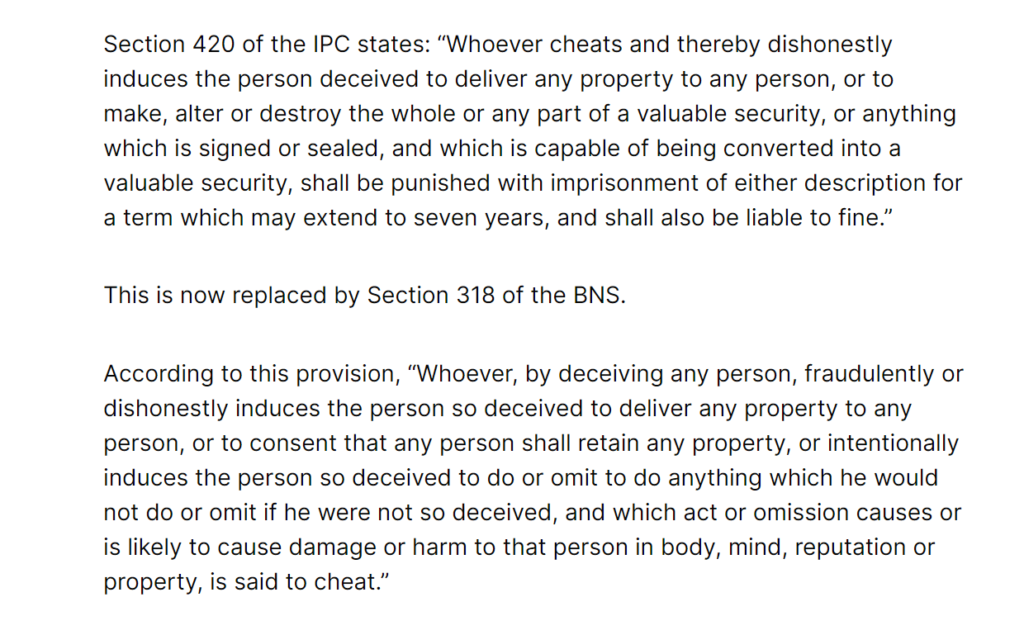Once upon a time, in the grand book of Indian Criminal laws, there was a section, a hallowed number, a digital villain: 420. It was the go-to code for anyone looking to pull a fast one, a magical number that could turn a gullible soul into a penniless pauper. From the silver screen to the dusty lanes of our country, 420 was a household name, a badge of dishonor worn proudly by cinematic con artists.
Bollywood, the dream factory of India, has been particularly fond of this number. From the iconic “Ustad 420,” where Amitabh Bachchan donned the role of a mischievous imposter, to “Hera Pheri,” where a trio of luckless souls stumbled upon a windfall, the number 420 has been a recurring guest star. Even the more recent “Golmaal” series has paid homage to this numerical antihero.
The Cinematic Con Man
The number 420 has been more than just a legal term; it’s been a character archetype in Indian cinema. The “420” character, often a charismatic anti-hero, has evolved over the decades, reflecting societal changes and audience tastes.
The Classic Con Man
The early portrayals of the 420 characters were often those of suave, sophisticated individuals. Actors like Dev Anand and Shammi Kapoor epitomized this era, playing characters who were charming, intelligent, and adept at manipulating people. These characters were often portrayed as victims of circumstance, forced into a life of deception. Their stories were often laced with romance and tragedy, making them complex and intriguing.
The Comic Con Man
With the advent of the 70s and 80s, the 420 character underwent a transformation. The focus shifted from the suave con man to the comical one. Actors like Rajendra Kumar and later, Govinda, popularized this new breed of con artists. These characters were often bumbling, inept, and relied more on luck than skill. Their schemes were more slapstick than sophisticated, providing ample opportunities for comic relief.
The Modern Con Man
In recent times, the 420 character has become more nuanced. Characters like Ranveer Singh in “Simmba” or Akshay Kumar in “Hera Pheri” blend elements of both the classic and comic con man. They are often portrayed as morally ambiguous characters who, despite their criminal activities, have a certain charm and appeal. These characters reflect the complexities of modern society, where lines between right and wrong are often blurred.
The cinematic representation of 420 has undoubtedly contributed to the number’s cultural significance. It has shaped public perception of con artists, making them sometimes endearing, sometimes despicable, but always fascinating. The demise of Section 420 may have changed the legal landscape, but the character of the 420 con men will continue to live on in the world of cinema.
But alas, the era of 420 is over. Like a fading star, it has been unceremoniously replaced by Section 318 of the Bharatiya Nyaya Sanhita. It’s like saying goodbye to a beloved villain; a part of our cultural DNA is gone. Sure, cheating hasn’t vanished, but the thrill of saying “420 ka case hai” is no more.
This change is a double-edged sword. On one hand, it’s a step towards modernizing our legal system. A rose by any other name is still a rose, and a cheat by any other number is still a cheat. On the other hand, it’s like renaming a pizza “circular bread with toppings.” Sure, it’s technically correct, but it just doesn’t have the same ring to it.
We can only hope that Section 318 will inspire as many memorable movie moments as its predecessor. Perhaps we could have a film titled “318 Ka Chakkar,” or “The Great 318 Heist.” But something tells me it won’t quite have the same impact.
So, let us raise a glass (or perhaps a more appropriate beverage) to Section 420, the OG of deception. You will be missed, you cunning number. But fear not, for the spirit of 420 lives on, in the hearts of every Bollywood antihero and in the endless creativity of human deception.
Note: “Let’s be real, folks: Cheating is about as appealing as a soggy sandwich. It might seem like a quick fix, but the taste is awful and the aftermath is a mess. Not only is it lame, but it’s also a total buzzkill for everyone involved.

This article has been written by Adarsh Tripathi (4th Year).